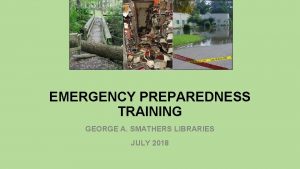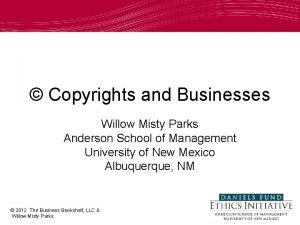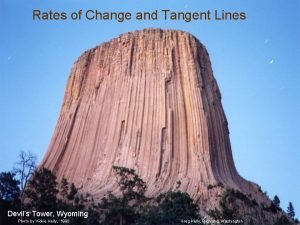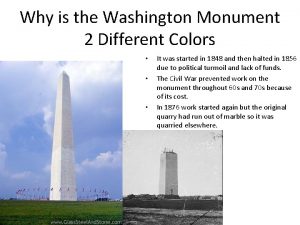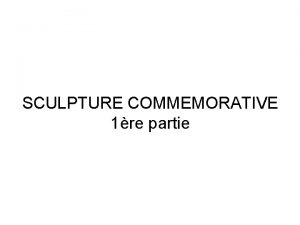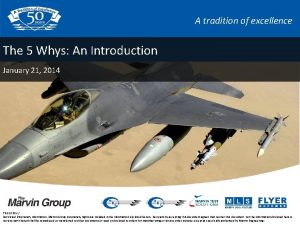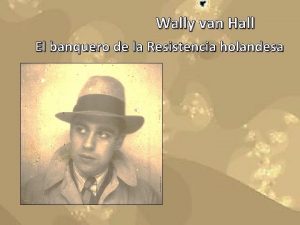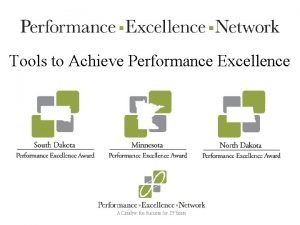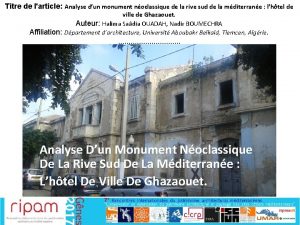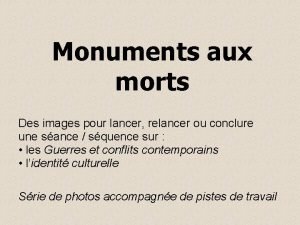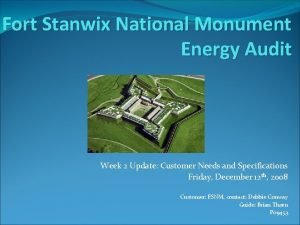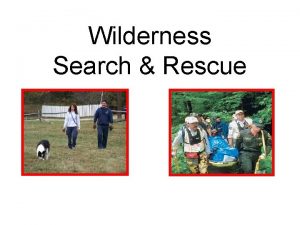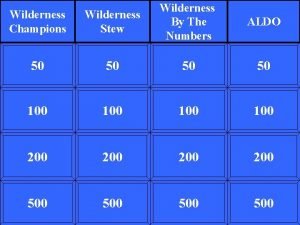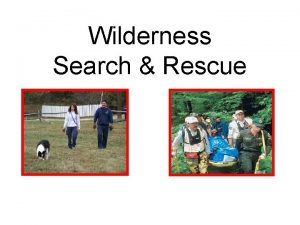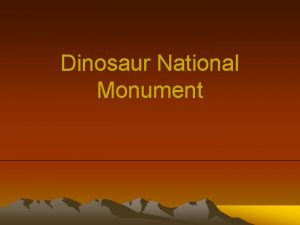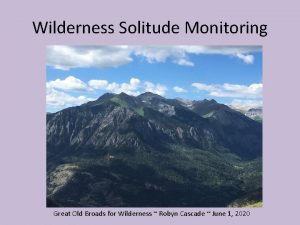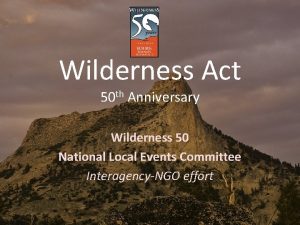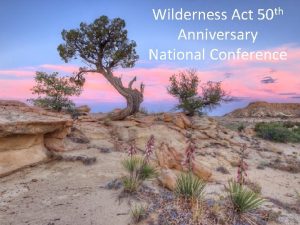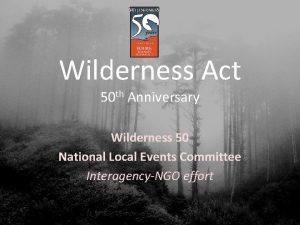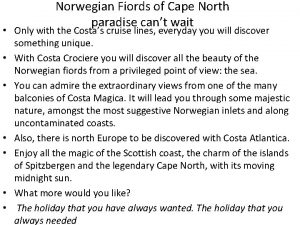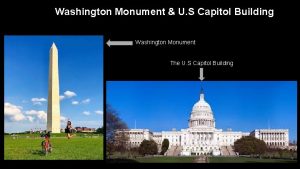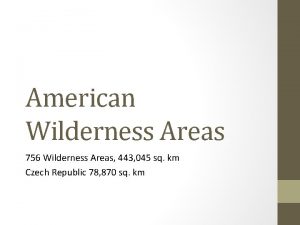Misty Fiords National Monument Wilderness Sound Monitoring 2008




















- Slides: 20

Misty Fiords National Monument Wilderness Sound Monitoring 2008 Project Leader: Jacob Hofman, Wilderness Inventory/Monitoring Crew Leader

Overview • Opportunities for solitude in Misty Fiords National Monument • National Park Service’s Natural Sound Program • Our Project / Equipment • Results / Data Analysis • What Worked/What Didn’t? • Recommendations

Misty Fjords National Monument Wilderness • Located 22 miles east of Ketchikan • Accessed by boat or floatplane • Portions of the area (e. g. Rudyerd Bay) popular for flightseeing • ~ 2, 000 commercial floatplane landings per summer • Wilderness Act, 10 YWSC, and KMRD Recreation Planning Process – Inventory/Monitoring of conditions related to solitude

National Park Service Natural Sounds Program / Soundscape Inventory • Provided audio processing scripts and software • Acoustic inventory of all natural and man-made sounds in the National Parks • Sound level standards (decibels, % time audible for non-natural sounds, # and duration noise-free intervals, time above speech interference threshold ) • NPS staff provided troubleshooting assistance

2008 Sound Monitoring • Monitoring sounds associated with motorized use • Sampling design/methods : accessibility, level of use, areas with other work planned • 77 days continuous audio data collected at 5 freshwater lakes • 44 days of data successfully analyzed • Data supported by staff sound monitoring efforts (Attended Listening Sessions)

Attended Listening Form

Equipment Audio Recorder 500. 00 Onmi - directional Microphone 25. 00 8 GB Memory Cards (2) 220. 00 Plastic Tote 20. 00 Pelican Case 25. 00 Radio Repeater Batteries (2) Free Adapter Cable 17. 00 Memory Card Reader 13. 00 Microphone Windscreen 3. 00 Microphone Plug Converter 3. 00 ____________________ TOTAL $828. 00

Monitoring Equipment Location

Data Analysis • SPLat – graphically represents audio information • Spectrograph indicates sound frequency and intensity over time • Sound events displayed in a lighter color (greater intensity) along a frequency spectrum

Punchbowl Lake Overflights Aircraft Overflight Distant Aircraft

Nooya Lake Take-Offs and Landings Aircraft Takeoff (low level)

Manzoni Floatplane Take-Off Aircraft Startup Aircraft Takeoff

Big Goat Lake Rain Event Raindrop on Microphone

Wilson Lake Helicopter Overflight Low Frequency Signature Characteristic of Helicopters

Average Number, Duration, and Time Audible for Mechanized Transport Sound Events Per Day 1 Location # of Sound Events Total Duration per Event % Time Audible 2 (average per day) (average per hour) (minutes per day) (average minutes) (average per day) Sound Intensity 2 7. 7 . 5 9. 6 1. 1 Sound Intensity 3 2. 0 . 1 1. 0 . 4 . 1 Total 9. 7 . 6 10. 6 1. 0 1. 2 Sound Intensity 2 7. 3 . 5 9. 2 1. 3 1. 1 Sound Intensity 3 1. 9 . 1 1. 1 . 6 . 1 Total 9. 1 . 6 10. 2 1. 3 Sound Intensity 2 56 3. 7 65. 2 1. 2 7. 2 Sound Intensity 3 16. 5 1. 1 5. 0 . 3 . 6 Total 72. 5 4. 8 70. 2 1. 0 7. 8 Sound Intensity 2 33. 4 2. 2 78. 9 2. 4 8. 8 Sound Intensity 3 3. 4 . 2 . 9 . 2 . 1 Total 36. 8 2. 4 79. 8 2. 2 8. 9 Sound Intensity 2 8. 7 . 6 7. 0 . 8 1. 2 Sound Intensity 3 1. 0 . 1 . 4 . 3 . 1 Total 9. 7 7. 3 . 8 1. 2 Big Goat Lake (9 days) Manzoni Lake (5 days) Nooya Lake (10 days) Punchbowl Lake (17 days) Wilson Lake (3 days) 1 2 Data analyzed for 15 -hour day, from 0600 to 2100 daily. Audible at sound intensity rating 2 or 3.

Example Nooya Lake. At 0830 an aircraft over flight creates sound so loud that conversational speech is impossible for 6 seconds. The aircraft sound is then clearly audible for over a minute. This is repeated 16 more times throughout the day. Because most aircraft fly during the morning and early afternoon, these interruptions will happen about three times an hour until 1400. During this 15 -hour day, aircraft sound will be clearly audible for one hour and ten minutes (about 8% of the day).

What Worked • Recording system gathers large amounts of information with minimal investments of money and field personnel time. • Captures the number, time, duration, and relative intensity of sound events • Captures soundscape variation throughout the day, week, and season • Document aircraft takeoffs and landings in some situations • Provides information on total use at lakes (including unguided)

What Didn’t Work • Inconsistent record of take offs and landings • SPLat software is still being developed • Data processing is very time consuming • Lack of accuracy (can not get accurate total decibel readings with this system)

Recommendations • Revise attended listening forms • Personal data recorders and timers on recording equipment • Continue to work with NPS staff as software is developed/improved • What can we do with this information? Developing standards and indicators related to solitude. • Develop a sampling methodology – stratified/random

More Information • MFNMW Sound Monitoring Report 2008 • Jacob Hofman (907. 228. 4140) – technical aspects • http: //www. nature. nps. gov/naturalsounds/
 Misty novitch
Misty novitch Misty swain
Misty swain Misty horn
Misty horn Misty cozac
Misty cozac Douglas crockford json
Douglas crockford json Misty parks
Misty parks Devils tower national monument
Devils tower national monument 2008 2008
2008 2008 Washington monument color
Washington monument color Jochen gerz monument contre le racisme
Jochen gerz monument contre le racisme Prehistoric monument dan word
Prehistoric monument dan word Symbol of multiculturalism
Symbol of multiculturalism The jefferson memorial and the 5 whys
The jefferson memorial and the 5 whys 5 why washington monument
5 why washington monument El banquero de la resistencia wikipedia
El banquero de la resistencia wikipedia Washington monument
Washington monument Monument
Monument Monument 500 million population
Monument 500 million population Dorian gray portree film
Dorian gray portree film Lancer monument
Lancer monument Monument energy
Monument energy

